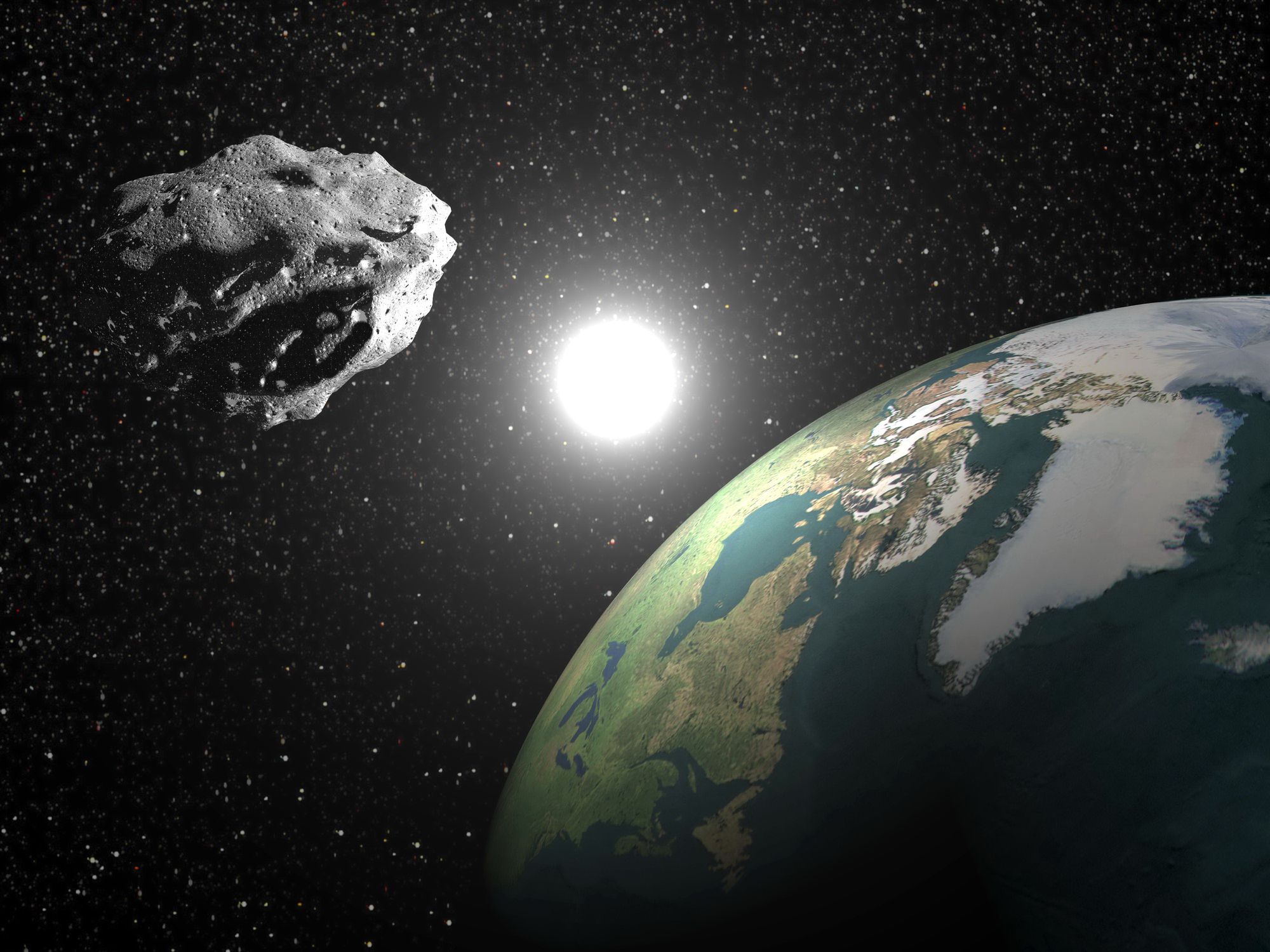
A large asteroid that is thought to be around the same size as the Statue of Liberty is set to whiz past our planet today, according to NASA's Center for Near-Earth Object Studies.
The space rock, known as 2013 MD8, is estimated to measure somewhere between 125 and 282 feet in diameter and is traveling at around 30,400 miles per hour (relative to Earth).
The asteroid will make its closest approach at 12:55 ET, NASA data suggests, potentially coming within 3,604,826 miles of our planet. This may seem like a large distance, but in space terms it is relatively small, although there is no risk of a collision.
Any asteroids or comets whose orbits take them within 121 miles of the sun, as well as within approximately 30 million miles of Earth, are categorized as "Near Earth Objects" or NEOs.
Furthermore, NASA classifies as "potentially hazardous" any NEOs that have a (typically small) chance of colliding with Earth—i.e., their predicted minimum approach distance is less than 4.6 million miles—and are greater than 460 feet in diameter.
While objects collide with our planet all the time, the vast majority are small (a diameter of less than 30 feet) and burn up in the atmosphere, so we don't even notice them.
But were a 460-foot space rock to strike Earth, it would cause devastation across localized regions in the event of a land impact, or a tsunami that could badly damage low-lying areas if it hit the ocean. According to NASA, such impacts occur roughly once every 10,000 years, on average.
Impacts from asteroids that measure 1 kilometer in diameter (0.62 miles) or larger—which occur every several hundred thousand years, on average—would cause even more catastrophic destruction, damaging the environment on a global scale.
As a reference, the asteroid blamed for wiping out the dinosaurs is estimated by some to have measured somewhere in the region of 6 miles in diameter.
Currently, researchers know about more than 18,000 NEOs—of which over 1,800 are considered potentially hazardous. And among the hazardous group, roughly 150 are estimated to be larger than a kilometer in diameter.
Scientists think that we have identified more than 90 percent of NEOs that are greater than 1 kilometer in diameter, because they are larger and, therefore, easier to detect. However, it is thought that many smaller objects are still unaccounted for.
While there are a handful of potentially hazardous objects that are predicted to have a small chance of colliding with Earth in tens to hundreds of years, the odds will likely fall as monitoring stations make more observations, enabling more accurate predictions of their trajectories.
Uncommon Knowledge
Newsweek is committed to challenging conventional wisdom and finding connections in the search for common ground.
Newsweek is committed to challenging conventional wisdom and finding connections in the search for common ground.
About the writer
Aristos is a Newsweek science reporter with the London, U.K., bureau. He reports on science and health topics, including; animal, ... Read more
To read how Newsweek uses AI as a newsroom tool, Click here.








